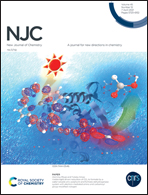Effect of the acid used in the evaporation-induced self-assembly method on Ce–Cu–Al trimetallic composite catalyst for its simultaneous removal of H2S and PH3
Abstract
H2S and PH3, which are ore-thermal furnace gases, are harmful to humans and the environment. Here, the performance of a catalyst, Ce–Cu–Al trimetallic composite catalyst, is further explored by examining the influence of the used acid. The effects of acids on the structural features, surface functional groups, and activity of the catalysts were examined. Test results showed that the catalyst fabricated using 71.7 mmol nitric acid performed the best, and its capacity reached 229.8 mg g−1 (H2S) and 201.9 mg g−1 (PH3). Besides, SEM and TEM showed that the whole structure of catalysts was sharply changed by the species of the acid used, which was caused by the different combinations of components in the catalyst system. Because of the change in the catalyst structure, their physical and chemical properties are also adjusted. Using nitric acid could endow the catalyst with better properties, such as the best specific surface area, higher total pore volume, the strongest acid center, and the best reducing power. Combining the analysis results of FTIR spectroscopy, it was found that the detailed functional groups of NH2− and νON played a role in the reaction.



 Please wait while we load your content...
Please wait while we load your content...